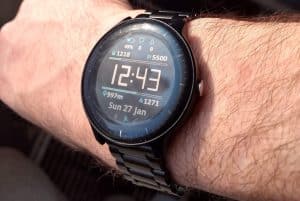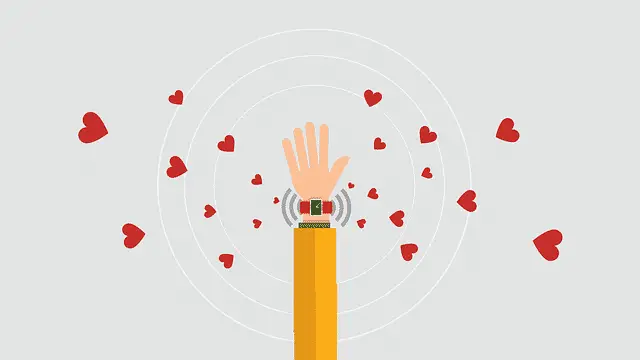Wearable technology or wearables is the term used for smart electronic devices that can be incorporated into clothing or worn on the body as implants or accessories. Some typical wearable devices are smartwatches, fitness trackers, smart jewelry, smart clothing, implantable devices
Since I’m interested in all kinds of devices I started wondering what kinds of wearable devices exist. So I decided to do some research to find out and it led to this article being written.
Smartwatches vs Fitness trackers
The most popular category of wearables

Fitness trackers are devices for monitoring and tracking fitness-related metrics such as step count, calories burnt, and in many cases heartbeat and quality of sleep.
Smartwatches are wearable computers in the form of a wristwatches providing more features besides time keeping. Smartwatches often include integration to your smartphone showing your incoming calls and messages and some apps with additional functionality like weather information and maps for directions. These devices usually include a touchscreen and often include lots of the same functionality as fitness trackers. One way of thinking of the smartwatch is that fitness tracking is one of the features it includes but it’s much more than a fitness tracker.
If you are interested in getting a smartwatch or fitness tracker for yourself or as a gift check out my buyers guide which will surely be helpful to you.
Really the line between smartwatches and fitness trackers is blurry since products marketed as fitness trackers may include functionality like showing incoming calls and messages as well. The general consensus seems to be that smart watches are the more versatile products and often have a higher price point compared to fitness trackers.
Smartwatches and fitness trackers usually rely on the internet connection from the smartphone and may use the gps from the phone or may include a gps system of it’s own which is useful if going for a run without the phone.
Smart Jewelry
Smart Jewelry consists of small decorative items worn like regular jewelry. This includes brooches, rings, necklaces, earrings, pendants, bracelets, and cufflinks. The most popular form of smart jewelry seems to be smart rings.
A smart ring is a wearable electronics device that combines features of mobile devices with innovative features such as mobile payments, gesture control and activity tracking. Smart rings can communicate directly with smart phones and they typically do not have a display. Possible features include making payments, unlocking electronic locks or controlling home appliances when making gestures.
Smart Clothing
Smart clothing also known as Electronic Textiles, smart garments or smart fabrics, are fabrics that enable electronic components such as a battery and electronics including small computers to be embedded in them.
There are two types of Smart fabrics: aesthetic and performance enhancing. Aesthetic examples include clothes that light up or change color. This can be really useful for example for outdoor sports at night for safety purposes or for children to have the clothes light up when it becomes dark. Some of these textiles can gather energy from the environment by harnessing vibrations or even sound or heat. Performance enhancing smart fabrics are intended for use in for example sports and military use cases. This could include textiles made to regulate body temperature or for example reduce wind resistance.
Smart textile examples
Polar Team Pro men’s base layer smart shirt comes with integrated sensors to monitor heart rate and a pocket for player tracking sensor located on the upper back for optimal GPS reception.
The SUPA Powered Sports Bra has an integrated heart rate sensor made from fabric. Yep, you won’t feel it’s even there. Just attach your SUPA Reactor to the SUPA Powered Sports Bra and connect to the SUPA.AI App.
Owlet Smart Sock 2 comfortably wraps around your baby’s foot to track heart rate and oxygen levels using clinically-proven pulse oximetry. The base station glows green to let you know everything is okay but will notify with lights and sounds if something appears to be wrong.
The Hexoskin Smart Kit for Men includes a Hexoskin Shirt and the new Hexoskin Smart recording device. Hexoskin Smart allows longer activity, cardiac, and respiratory monitoring for continuous personal health, fitness, and sleep assessment. Featuring an improved Bluetooth 4.1 connectivity and a high-performance battery that can record over 30 hours of data. This new device also provides heart rate data for mobile 3rd party applications such as MapMyRun, Runkeeper, and Runtastic.
Siren’s Diabetic Socks and Foot Monitoring System proactively track foot temperature, helping you find potential signs of diabetic foot ulcers. Siren Diabetic Socks use Neurofabric to detect temperature changes between your feet, which are a sign of possible foot ulcers. By monitoring foot temperature, you can look for the early signs of a possible ulcer.
Implantable Smart Devices
Implantable devices are things that become part of a person or animal since they are inserted usually under the skin via a surgery. Some common examples are pacemakers and defibrillators or combinations of these devices. These devices are often recharged via wireless charging to avoid further operations to change batteries.
Head-Mounted Displays
Head-mounted displays or Helmet-mounted displays (HMD) are display display devices, worn on the head or as part of a helmet. There is a small display in front of one or both eyes. HMD devices can be used for example in gaming, aviation and medicine.
On the gaming side there are devices for virtual reality and in for example aviation it’s about bringing useful information visible for the pilot. There are also applications in surgery, where a combination of different imaging sources can be combined with the surgeon’s natural view of the operation to enhance the surgeons ability to perform the operation.
Wearable technology History
The history of wearable devices starts with eyeglasses. It would be easy to overlook glasses, but these indeed can be considered wearable technology as well. The first glasses were made in Italy, most likely around 1290.
Watches are a second stage to wearable technology. As early as in 1500 small watches were created and worn as necklaces. Later people began to carry watches in their pockets with the creation of pocket watches. Wristwatches were created in the late 1600s but were initially used mainly by women as bracelets.
Modern wearable technology is more related to wearable computers. One early piece of wearable technology was a calculator watch, which was introduced in the 1980s. Even before this hearing aids had become electronic and commonly used. Heart rate monitors also had their place and were commonly used as dedicated devices before fitness trackers with a wider range of functionality.
Early Heart rate monitors consisted of a monitoring box with a set of electrode leads which attached to the chest. The first wireless EKG heart rate monitor was invented in 1977 by Polar Electro as a training aid for the Finnish National Cross Country Ski team.
Polar was making fitness wearables long before Garmin shifted to personal body tracking with GPS in 2006 with the introduction of Forerunner. I have also used and owned multiple Polar hear rate monitors with chest straps over the years.
Fitbit released its first wearable around 2009. The Fitbit Classic was a clip on device that wasn’t really much more than a step counter. We have come along way since those days.
In the next years smartwatches began to be released by major electronics companies. One of the first offerings was the Samsung Galaxy Gear which became available in 2013. Apple followed with the Apple Watch in 2015.
Wearable Technology Trends looking forwards
I’m not going to make any predictions here rather merely sum up what I have read and seen.
Healthcare
I think the biggest thing looking forwards multiple years will be the growth in implantable smart devices available. Going forwards it won’t be just pacemakers and defibrillators but all the artificial hips, legs, arms etc. will surely at some point get sensors and start communicating. When some body part or organ is replaced in the body it will be more likely that it will not just do what the original part did but rather have some additional capabilities and augment the human features in some way.
Wearable accessories
In the short term we are bound to see more and more devices with smart capabilities and communication built in. Smart watches will keep improving, but all the other things we wear like glasses, jewelry, clothes, helmets, shoes will start getting new features.
Personally I would enjoy getting better gear for swimming. A reliable way of tracking swimming distance and showing the distance and lap times on my goggles would be amazing. There is a South Korean company called Zwim working on some smart goggles and I really hope they will be good.
Smarter assistants and


